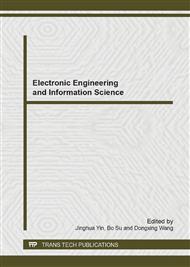p.797
p.801
p.806
p.810
p.814
p.818
p.822
p.826
p.830
Electrical Conductivity and Breakdown Characteristics of SiC/LSR Nanocomposites at Different Temperatures
Abstract:
In high voltage direct current (HVDC) cable accessories, there is a large difference of conductivity between crosses linked polyethylene (XLPE) and liquid silicone rubber (LSR), especially considering the presence of temperature gradient and the changing of operating temperature. In this paper, nano silicon carbide (SiC) was adopted to prepare five kinds of nanocomposites with filler fractions of 1%, 2%, 3%, 4% and 5%, respectively. The conductivity and DC breakdown strength of SiC/LSR nanocomposites were measured under different temperatures. The results show that the nano SiC doping does not has the great influence on LSR DC breakdown strength, and the nano SiC doping can improve the conductivity of LSR effectively, which can realize the conductivity matching between the LSR and XLPE to homogenize the electric field distribution in cable accessory.
Info:
Periodical:
Pages:
814-817
Citation:
Online since:
July 2014
Authors:
Price:
Сopyright:
© 2014 Trans Tech Publications Ltd. All Rights Reserved
Share:
Citation:


